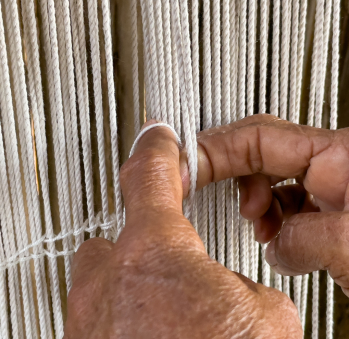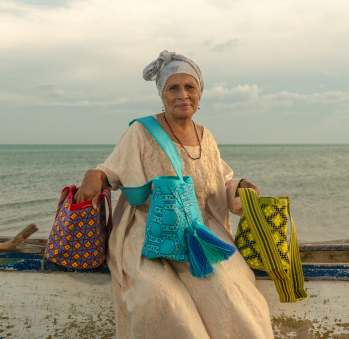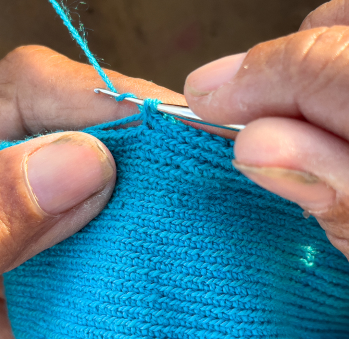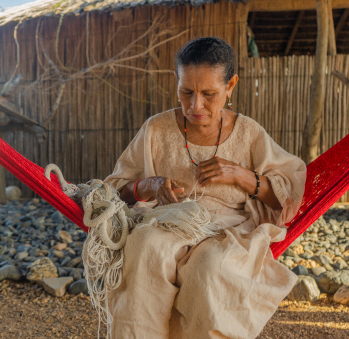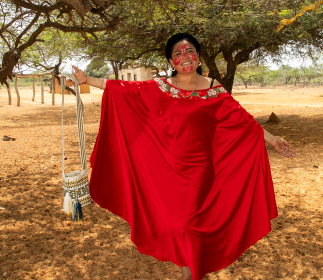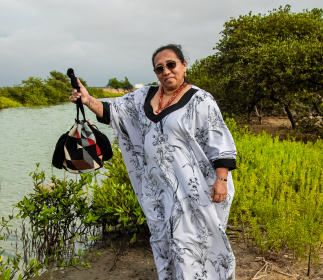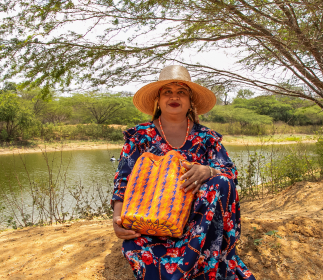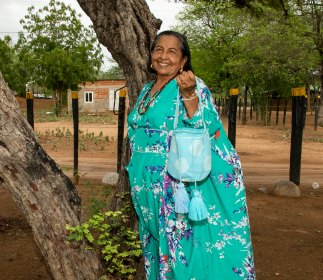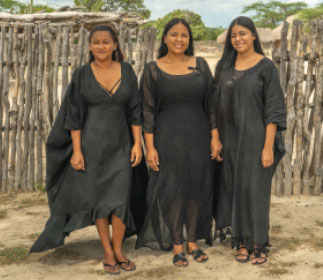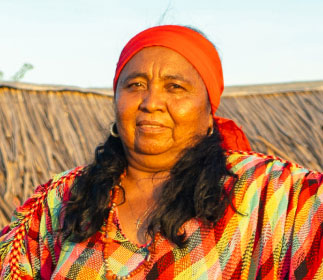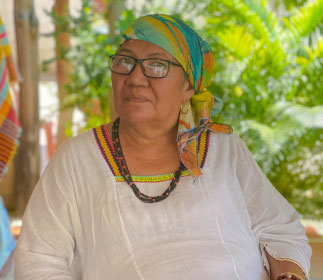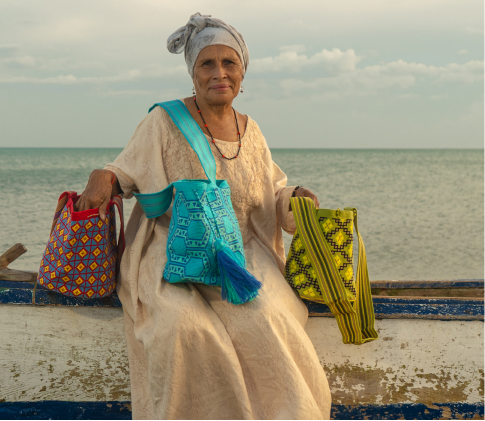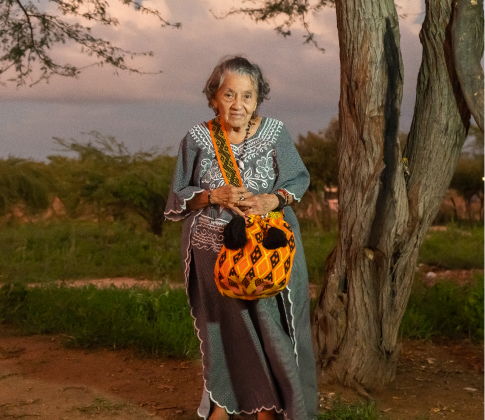María Concepción “Conchita” Ospina
Workshop: Kayuusipaa
Craft: Weaving
Trail: Riohacha - Nazareth Route
Location: Cabo de La Vela, La Guajira
SCHEDULE YOUR VISIT
Hospedaje kayuusipaa, Cabo de la Vela vía al faro.
3114420427
kayuusipaa@gmail.com
“My name is María Concepción Ospina Gómez, and my artistic name is Conchita, which is how everyone knows me.” She was born, raised, and currently lives in Cabo de la Vela, the seaside paradise of the Alta Guajira. Her mother, Lilia Gómez, and her aunts, María Agustina and Juana, taught her the craft she has continued to practice throughout her life.
She says that she believed she was an adult who did “big people” chores but on her own scale when she was barely ten years old. “I weaved, I made small mochilas, I made small chinchorros, I set up my small loom by myself… I kind of grew up among the art and sheep herding. I went to get water, I came back, I gave the animals water to drink, and spent time weaving with my mother.” Her puberty came in pretty late, when she was already 15.
As a result, she did not get the chance to experience the ritual of confinement. She regrets that to this day. However, that did not stop her from becoming a master at her craft. She would, in turn, come to be an important figure in the north of the country for this reason. Her interaction with the world has also made her unique. Living in a place as touristic as Cabo de la Vela means meeting people from all places who are eager to discover a sea connected to the stars. She has had the opportunity to meet hundreds of foreigners and awe them with what she tells and shows. She welcomes them into her seaside lodge and tells them all they need to know about the chinchorro hammock. She even confesses that the secret of the craft lies in the precise hanging of the loom.
She also loses herself in the drawings of constellations, horses running across the sand, and the stories of Wale’ Keru: the spider that has managed to weave dreams across time through the hands of every woman who immerses herself in its web. Nonetheless, there is something else that ties her to other cultures. Her grandmother was the daughter of a Wayúu man who had a Spanish father, and her first husband was a Frenchman. She has enjoyed hundreds of invitations to display her mochila bags and chinchorro hammocks with all the knot tying that she likes so much. She has been invited to the International Folk-Art Market (IFAM) of New Mexico four times, as well as to other crafting events in France.
Despite the exposure she has had, she understands that Wayúu knowledge must live on. Since she did not bear any daughters, she made teaching her personal mission. With her female students, she has experimented with innovation in her products. Now, alongside many designers, they are dividing up the mochila and creating new thing: the ware’s bases are being made into placemats or centerpieces, and its ropes are being made into belts for young people. She belonged to the group of craftswomen who worked on fabric appliqués for suitcases and backpacks with a renowned Colombian brand. She is not afraid of a challenge and knows that she can keep her tradition alive through these alliances.
Craft
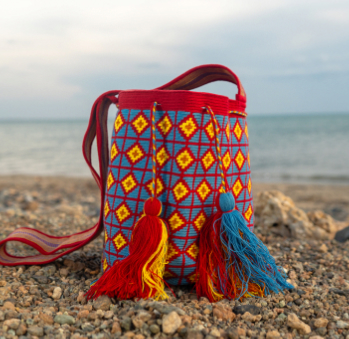

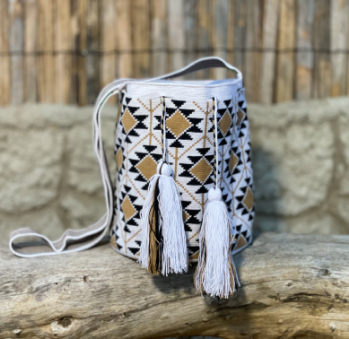



Artisans along the way
Artisans along the way
No puede copiar contenido de esta página








































